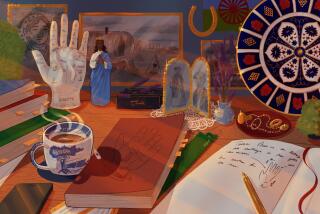Big Science Isn’t the Only One With Answers
- Share via
For many Americans, the very idea of non-Western medicine evokes images of shamans in loincloths carrying out exotic rituals that have no real effects. Indeed, medical traditions from other places are often viewed as irrational, ineffective or at best prescientific.
But recent headlines have drawn attention to a growing body of evidence indicating that the scientific and medical practices of other societies yield impressive results even by our standards. An independent panel of researchers organized by the National Institutes of Health concluded that acupuncture, a Chinese medical practice dating back more than 2,500 years, can be an effective remedy for certain ailments. The panel recommended integrating acupuncture into standard medical practice for treating a number of illnesses associated with nausea and pain.
Many Western scientists are beginning to recognize that people in other societies--including many that are sometimes derisively referred to as “backward” or “primitive” or “savage”--have evolved specialized science traditions that can be translated into our own terms of laboratory or clinical science.
Examples abound. American agronomists, for instance, only recently learned that intercropping (planting one crop alongside another in the same field) is a sounder way of farming than monocropping. By conducting their own tests, the scientists were able to learn why Zapotec and Mayan Indians in southern Mexico have planted corn, beans and squash in this fashion for millennia: Intercropping boosts the soil’s organic content and nitrogen level while decreasing erosion, harmful weeds and in some cases pests. If adapted to our own farming systems, this indigenous science practice might lead to fewer chemical fertilizers and pesticides in our environment.
Another example comes from Micronesia, where fishermen with an encyclopedic knowledge of their prey’s behavioral patterns have successfully exploited fish stocks for centuries without depleting their numbers. A number of elements in their highly perfected approach might serve as models for more efficient and environmentally sustainable ways of exploiting tropical fish in coral reef areas elsewhere, which according to some estimates could supply up to 7 million tons of fish annually--enough to feed the U.S. population for more than three years. This potential is not being realized due to overexploitation in some areas and underexploitation in others.
Many examples could be cited from animal husbandry, forestry and land management. Throughout this century, cultural anthropologists have recorded volumes of such information and much of it simply needs to be tested. Indeed, if we are concerned about national competitiveness, more of it should certainly be directed at this line of inquiry; the Canadians, Australians and Europeans are leaving us behind.
Lamentably, alternative science traditions are often seen as unscientific principally because they are not developed in modern laboratories. Because non-Western science traditions are distilled from hundreds or thousands of years of slow, steady trial and error experimentation, they often have a different appearance (and explanatory frameworks) than the hypercompressed research that occurs in high-tech Western laboratories, where scientific research follows a systematic process of trial and error.
Too often science issues are drawn into a fruitless two-way debate between proponents of a laboratory-based “Big Science” and its alleged enemies. A better approach might be to extend the strategy being employed by the National Institutes of Health. It begins with the assumption that there is more than one Big Science; there are many sciences. There is more than one prototypical scientist; there are many scientists. And they do not all wear white lab coats. If we were more willing to acknowledge this reality, we might discover tried and true scientific answers waiting for us in the most unexpected places.






